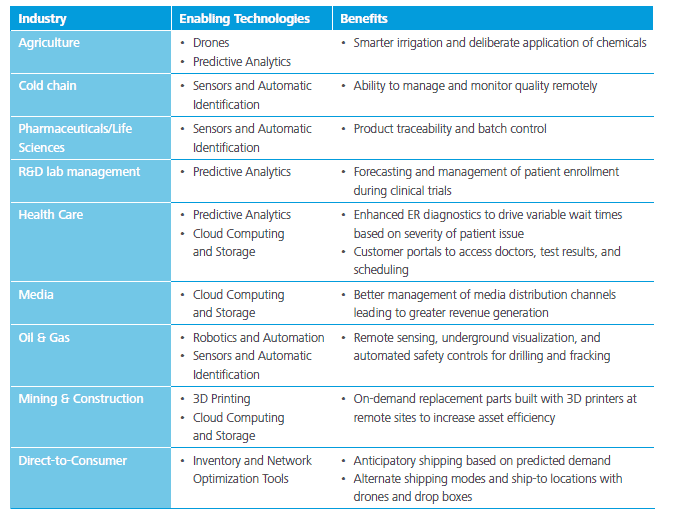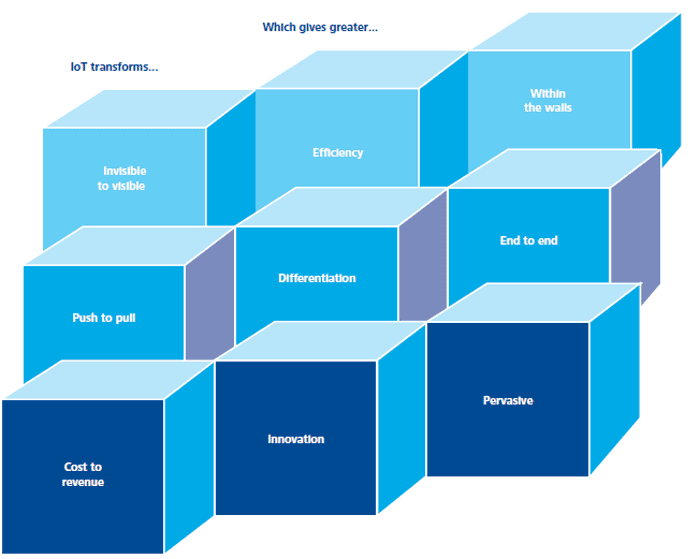MHI - once known as the Material Handling Industry of America but now just by the initials - is a trade organization representing materials handling-related hardware, software and services companies. But in recent years it has really upped its profile by trying to gain more general prominence for the industry and the organization, and is also trying to attract interest from regular supply chain and logistics practitioners beyond the employees of its member companies.
Supply Chain Digest Says... |
|
|
That really started in a sense with its "Materials Handling Roadmap," a major work that was based on input from hundreds of industry professionals and led by Dr. Kevin Gue, now of the University of Louisville. That document presented a vision for where materials handling systems across the supply chain were headed, and identified key technologies that would likely be essential to that evolution, if not in some cases a revolution.
That was followed up in 2015 with a new style of annual report from MHI. In the past, these reports had generally focused on economic numbers and forecasts relative to materials handling systems and equipment sales, data of course of much interest to its member companies.
But last year's report, prepared in partnership with consultants from Deloitte, almost completely revamped that model, with use of much survey data from supply chain professionals and details on eight new technologies that will have a big impact on future supply chains, technologies first called out in the 2014 Roadmap.
The 2016 report, just released in conjunction with MHI's MODEX show in Atlanta two weeks ago, provides an updated view of those technologies, and now wraps their impact under what the report calls the coming era of "always on" supply chains.
What is an always on-supply chain? The report defines the concept as "An integrated set of supply networks characterized by a continuous, high-velocity flow of information and analytics, creating predictive, actionable decisions that better serve the customer."
So the always on supply chain is going to be a smarter one, characterized by high levels of visibility and more advance decision support tools. It is also connected at the hip to the notion of "digitizing" the supply chain, relative to which the report says are the following changes:
• Geophysical space has become less relevant
• Managing availability versus managing scarcity
• Two-way flow of data and information versus one-way flow of physical goods
• Consumers/customers as data creators (for example, through crowdsourcing)
• Physical assets exchanged for information
• Cross-ecosystem collaborative networks
The report includes the chart below, which summarizes key opportunities for the always-on/digital supply chain across different industry sectors.
How Different industry Sectors are Benefiting from Always-On Supply Chains

Source: MHI Annual Report 2016
The eight technologies featured as key to this always-on transformation are as follows:
• Predictive analytics
• Robotics and automation
• Sensors and automatic identification
• Wearable and mobile technology
• Driverless vehicles and drones
• Inventory and network optimization tools
• Cloud computing and storage
• 3D printing
With regards to advanced analytics and other "cognitive" technologies, the report says that as the technology evolves, "it is likely to become another tool in the toolbox. It will be very useful for the right application, but will not replace traditional capabilities that also complement the human thought process. The man-machine dichotomy is not 'either-or.' It is unequivocally 'both-and.'"
(See More Below)
|
CATEGORY SPONSOR: SOFTEON |
|
|
| |
|
|
We're not so sure about that. SCDigest believes the computers will in fact be making a lot more supply chain decisions on their own, without need for human intervention, or at most a rapid review of the plan.
We also liked a chart and discussion in the report on the opportunity for use of the Internet of Things (IoT) in the supply chain. There is a lot of hype and frankly even a good amount of humbug out there relative to IoT, but nevertheless that doesn't mean there isn't something very real going on here, both generally and within the supply chain.
Boiling that down to some core concepts isn't easy, but the report did a nice job of summarizing this in the graphic below:
Ways in which IoT Might Transform the Supply Chain

What we most like about this graphic are the blocks in the first "column," on what areas IoT can transform. The potential is to:
Make the Invisible Visible: Many processes, usage patterns, environmental conditions and more are simply not instrumented or captured today. IoT, and soon trillions more sensors, can change that dynamic.
Adapt Push Supply Chain Processes to Pull: If you can't see actual demand, for a product or a service, you almost by definition must either practice a push based supply chain, or react to that demand with a great degree of latency. IoT visibility can help supply chains better sync delivery with demand frim improved visibility and a reduction of latency.
Find New Sources of Revenue: SCDigest isn't so sure many companies will actually transform cost into revenue, but certainly many industrial equipment manufacturers have already found ways to bundle insights from the data they acquire from IoT from their machines into new services to sell to customers. This will expand to other areas, such as the Amazon.com Dash service, in which for example a Brita water filter will keep track of how many times a filter is used and send an order for a new one from Amazon right before the current one needs replaced.
These transformation can impact efficiency, differentiation and innovation, Deloitte says, within the four walls of the enterprise and across the end-to-end supply chain, while ultimately providing "pervasive" connectivity to the broader environment.
Another theme running across all the transformative technologies is the need for more attention to "talent management," the report says.
Towards this end, MHI and the Material Handling Education Foundation, Inc. (MHEFI) have developed something called the Career Technical Education (CTE) program, which the report says "is helping to build the workforce of tomorrow by supporting curriculum, resources, and certification programs at the high school, vocational/technical school, and community college levels."
More about that program on these pages someday soon.
The full 2016 report is available at the MHI web site.
Any reaction to this year's MHI report? Do you like the concept of the "always on" supply chain? Let us know your thoughts at the Feedback section below or the link above to send an email.
Your Comments/Feedback
|